
De Stijl, incorporating the ideas of Neoplasticism, was a Dutch art movement founded in 1917 in Leiden, consisting of artists and architects. The term De Stijl is also used to refer to a body of work from 1917 to 1931 created in the Netherlands. Proponents of De Stijl advocated pure abstraction and universality by a reduction to the essentials of form and colour. They simplified visual compositions to vertical and horizontal, using only black, white and primary colors.

The Hague School is a group of artists who lived and worked in The Hague between 1860 and 1890. Their work was heavily influenced by the realist painters of the French Barbizon school. The painters of the Hague school generally made use of relatively somber colors, which is why the Hague School is sometimes called the Gray School.

The Royal Academy of Art is an art and design academy in The Hague, offering programs at both the HBO bachelor's and master's levels, as well as PhD programs.
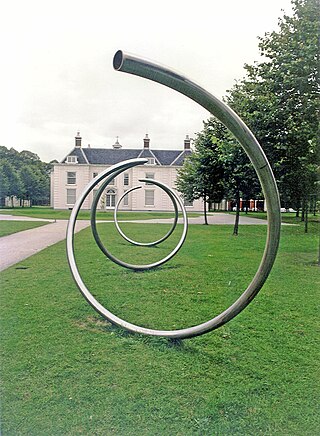
Lucien Armand Marco den Arend is a geometric abstract sculptor. As is the case with concrete art, his work is not modeled after any existing object – his sculpture represents only itself. Most of his sculptures and Land art projects were made as public art.
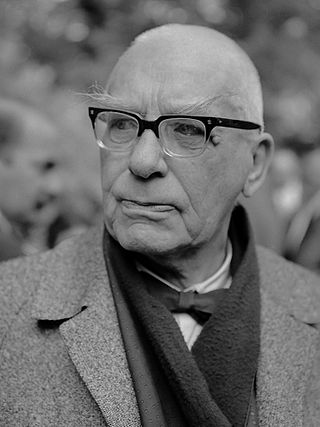
Hildebrand Lucien (Hildo) Krop was a prolific Dutch sculptor and furniture designer, widely known as the city sculptor of Amsterdam, where his work is well represented.
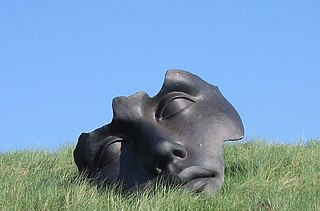
Beelden aan Zee museum in the Scheveningen district of The Hague, founded in 1994 by the sculpture collectors Theo and Lida Scholten, is the only Dutch museum which specialises in only exhibiting sculpture.

Paul Joseph Constantin Gabriël or Paul Gabriël was a painter, draftsman, watercolorist, and etcher who belonged to the Hague School.

Jonkvrouwe (Lady) Cornélie Caroline "Cox" van Asch van Wijck was a Dutch artist and sculptor.
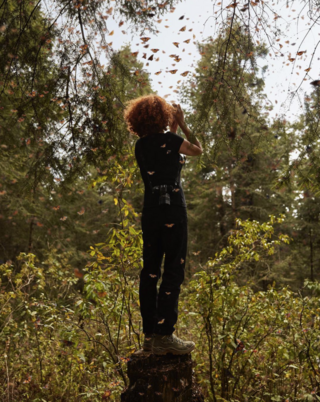
Desiree Dolron is a Dutch visual artist who lives and works in Amsterdam, the Netherlands. Her photographs portray a variety of styles and subjects, including documentary photography, still life, portraits and video works. Dolron is best known for her series Xteriors (2001-2018).
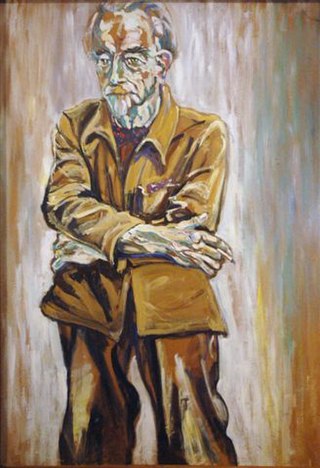
Theo van Reijn was a Dutch sculptor.
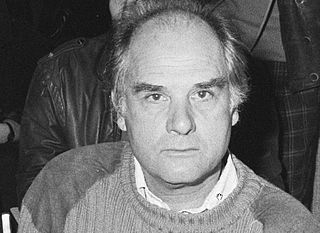
Carel Nicolaas Visser was a Dutch sculptor. He is considered an important representative of Dutch abstract-minimalist constructivism in sculpture.

Jan Cornelis Snoeck was a Dutch sculptor and ceramist.

The New Hague School was a movement in the Dutch fine arts of the 1950s and 60s. It opposed the Cobra avant-garde movement and found its inspiration in 17th-century art and the experiences of the Barbizon School and the resulting Hague School.

The Wilhelmina-ring is a bi-annual lifetime achievement award granted to a prominent Dutch sculptor. The prize was initiated in 1998 by the Foundation Wilhelmina-ring to memoralize that year Wilhelmina of the Netherlands was inaugurated as queen 100 years earlier.

Helena van der Kraan-Maazel born Helena Jirina Mazl was a Czechoslovakian-born Dutch photographer and partner in the artist duo Axel en Helena van der Kraan.
VV SHO, or in the long form Voetbalvereniging Steeds Hooger Oud-Beijerland, is a Dutch football club from Oud-Beijerland. It was established on 18 July 1930 and plays on Saturdays. The first squad competes in 2017-18 Eerste Klasse Saturday.
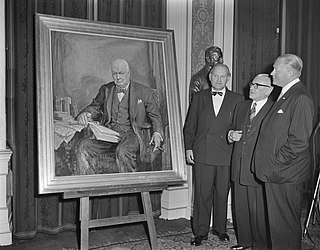
Marten Ykes "Max" Nauta was a Dutch painter, especially noted for his portraits, and stained glass artist.

Hendrik Albertus van den Eijnde or van den Eynde was a Dutch sculptor. His work was part of the sculpture event in the art competition at the 1936 Summer Olympics.
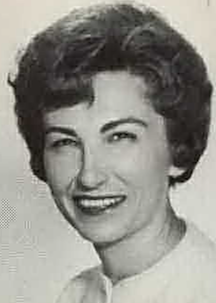
Helen Shafter Feyler-Switz was an American artist and art instructor, based in California.























